
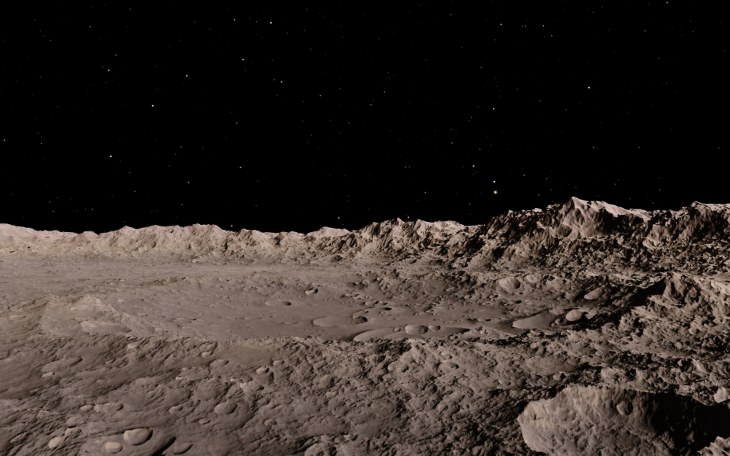
Researchers from Tohoku University found that the moon rock was primarily composed of moganite, which is a mineral that cannot form without the presence of water. This discovery is huge since it is the first time that moganite has ever been detected in a moon rock.
"Moganite is a crystal of silicon dioxide and is similar to quartz. It forms on Earth as a precipitate when alkaline water including SiO2 is evaporated under high-pressure conditions," said lead researcher Masahiro Kayama. "The existence of moganite strongly implies that there is water activity on the Moon."
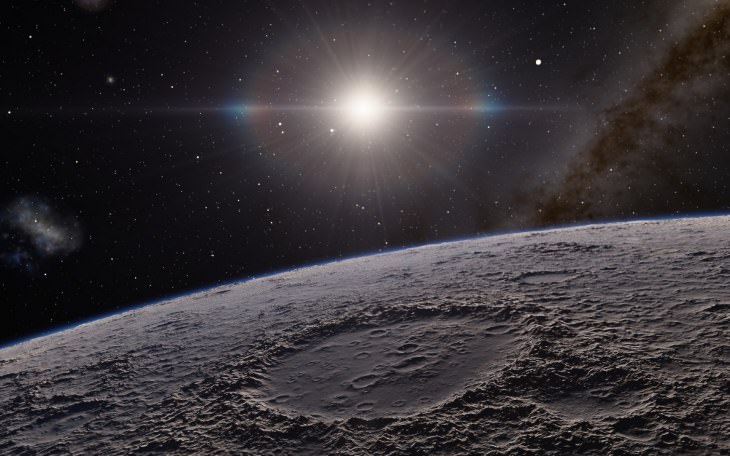
For ages, researchers had held the belief that the moon doesn't contain any water at all. While this may be true for its surface, several studies have suggested that there is actually ice hidden somewhere in the moon's crust. So far, no researchers have ever managed to pinpoint its location, which is why the discovery of moganite in this asteroid is so exciting for the scientific community since it proves that ice is present at mid and lower lunar latitudes.
Using electron microscopy, the scientists closely inspected the chemical makeup of 13 different lunar meteorites, which were all recovered from the same African desert. They then used a technique called micro-Raman spectroscopy to identify particular mineral structures within each meteorite. Curiously, moganite was only found in one of the samples, which indicates that it could not have formed after landing on Earth.
According to Kayama, "if terrestrial weathering had produced moganite in the lunar meteorite, there should be moganite present in all the samples that fell to Earth around the same time. But this was not the case."
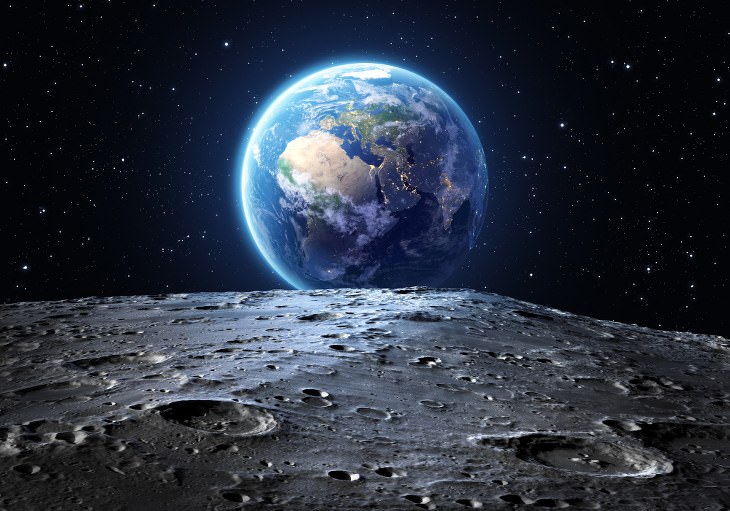
The team of scientists believes that the moganite was formed through evaporated water on the Moon's surface, in an area known as the Procellarum Terrane, which frequently receives strong and direct sunlight.
"For the first time, we can prove that there is water ice in the lunar material," Kayama said. "In a moganite, there is less water, because moganite forms from the evaporation of water. That's the case on the surface of the moon. But in the subsurface, much water remains as ice, because it's protected from the sunlight."
The scientists have estimated the water on the moon is roughly 0.6 weight percent. This means that future explorers should be able to extract around 6 liters per cubic meter of moon rock (roughly 1.6 gallons of water per 36 cubic feet). If this estimate turns out to be accurate, this would mean that future colonies on the moon would have more than enough water to keep them going for a very long time.

This study's biggest drawback is that the findings cannot be confirmed until further samples are retrieved from the moon itself. Thankfully, there are already a handful of lunar missions in the pipeline, and Japan's Aerospace Exploration Agency has promised to carry out two expeditions, one to search for additional sources of water, and another to bring back additional samples.
In the meantime, the team is now focusing on water that forms from volcanoes and solar wind - two distinct ways that water could have appeared on the moon. "Solar wind-induced water can give us new insight into the history of Sun activity, and volcanic water provides us with information of lunar evolution together with water," said Kayama.
Once again, all we can do is sit back and wait for further developments.

This Is What’s Currently Known About COVID-19 Immunity
We now know for certain that recovering Covid-19 patients possess antibodies for the illness. What does that mean regarding their immunity for reinfection?
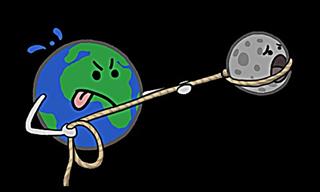
Video Box: All the Things That Make Our Planet Tick
Give your brain a little scratch with a series of earth-themed general knowledge lessons in the form of quirky and cute animations.
 10:02
10:02
All the Fascinating Space Discoveries Made in 2019
2019 has seen quite a few eye-opening discoveries about space and astronomy. Learn about 26 of them in this video.
 4:53
4:53
You Are Literally What You Eat: How Food Affects the Brain
What happens in the brain when we opt for honey instead of jam? And how is Mediterranean diet better memory performance? Click to find out!

Evolution Isn’t Over: New Anatomical Feature In Humans
A new study reveals evolution is far from over. In fact, humans are developing a new anatomical feature: a third artery in the arms

Alcohol Linked To More Cancer Types Than Previously Known
A new study found a clear correlation between alcohol consumption and more types of cancer than previously known.
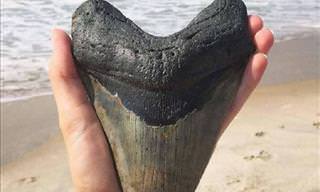
20 Fascinating Things That Can Be Found in the World
These pictures show us 20 fascinating and absolutely astounding things, from a single mountain with 1000 waterfalls to a giant ant!
 5:47
5:47
This Genius Child is a Better Calculator than a Computer
This ‘human calculator’ could likely outpace you entering the numbers into a calculator.
 16:26
16:26
Neanderthals Had Strength and Skills Beyond Our Limits
Neanderthals possessed truly exceptional, almost unbelievable, traits.

These Engineering Failures Ended In Real Catastrophes
These are 10 of the worst engineering failures in history. These accidents had horrific results, and we must learn from them to never ever repeat them.

Has Modern Technology Changed Our Cognitive Abilities?
Modern digital technology is everywhere and it’s changing how we think, how we behave and even how we feel about things.
 4:57
4:57
The First 3D-Printed Hotel is Already Being Built!
s evidence of this, a groundbreaking project is nearing completion, in which a hotel is being printed, and tourists will soon be able to visit it. Curious to see what it looks like?
 7:21
7:21
Science: 20 Mechanical Principles Demonstrated Using Lego
In this video, we'll explore a variety of fascinating mechanical mechanisms, all demonstrated using Lego models.

Let's Learn All About Your White Blood Cells
White blood cells (WBCs) are the part of your immune system which is responsible for fighting infection. Learn all about them here!

8 Ancient Greek Scholars & Their Life-Changing Inventions
The foundations of modern medicine, engineering, biology, and astronomy were set up by these 8 stellar minds more than two thousand years ago.

15 Beautiful Carl Sagan Quotes on the Stars and the Cosmos
A look at some profound quotes on the universe by famous astronomer and cosmologist Carl Sagan.

Scientists Develop 'Flying Dragon' Robot to Fight Fires
Scientists in Japan have created a water-spitting 'flying dragon' robot to fight fires.
 15:41
15:41
Keep Your Home Safe with These Handy Gadgets
These 13 devices will transform your home security.

The Most Remarkable Medical Breakthroughs of 2024
Here’s a look at some breakthroughs in medical innovation this year.
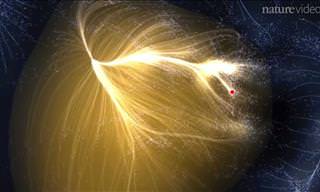 4:11
4:11
This Video Will Show You Where We Are in the Universe!
Where is our galaxy in the known universe? This video will fly with you to ever-larger destinations, showing you our little planet's cosmic address from a very large viewpoint.

Science Breakthrough: An Immunization Against Skin Cancer?
This scientific breakthrough offers hope for those who are struggling with skin cancer. You are now invited to discover more about this revolutionary vaccine.
 13:21
13:21
The Race to Complete the World's Second-Tallest Skyscraper
Malaysia is all set to unveil the world’s second tallest skyscraper.
 42:14
42:14
Physicist Michio Kaku: The Universe in a Nutshell...
Physicist Michio Kaku explains the fundamental nature of our universe

When Under a Microscope, Even Ordinary Things Seem Alien
Have you ever given any thought to what every day things look like under a microscope? Some of these images are truly beautiful - see for yourself in the images below.
 19:27
19:27
20 of the Most Infamous Tech Product Flops In History
Here's a look at some of the most infamous and biggest technology failures in recent history.
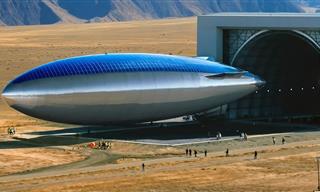 20:01
20:01
Future Tech: 19 Innovations About to Change Our World
These groundbreaking new technologies will change our world.
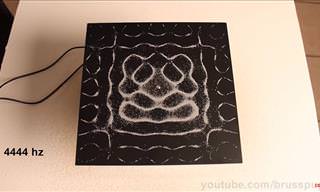 3:39
3:39
Magic is Only A Vibration Away With This Great Experiment
All it takes is some sand, a metal plate and carefully toned vibrations from a speaker to create stunning and complex patterns. This video shows you the amazing results!

2024's Biggest Breakthroughs in Science We Must Celebrate
These recent scientific breakthroughs could change the world.
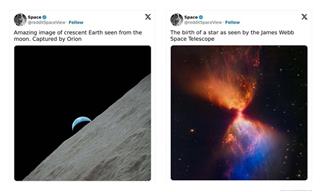
These 18 Photos Capture the Universe Like Never Before!
See the universe in a new light with these astonishing photos.

20 Amazingly Simple Inventions That Make Life Easier
Some wonderful inventions can fix some of the most annoying little problems that bug us every single day. Here are 20 of the most inventive ideas I've ever seen that I can't believe no one has invented before.

Earth Is So Incredible: I Was Stunned by These 50 Facts
Here's a post that will explain to you just what's truly, scientifically amazing about our planet Earth. I'm gobsmacked.
 1:08
1:08
Boston Dynamics New Robot Can Move Almost Like a Human
Watch the latest in robotics in this video.
 8:19
8:19
You Won't Believe What Passes for a Phone in North Korea
You won't believe what phones look like in North Korea!
 4:45
4:45
Woah! Learning to Play Music Has This Effect on Your Brain
Learning how to play an instrument can do wonders for our brain...here's how!
 4:52
4:52
Neon Lights: a Beautiful Union of Science and Art
Neon signs are a beautiful blend or artistry and science, and knowing the history and the science behind them make them even more exciting
 1:44
1:44
You Won't Believe What the Human Body Does in One Minute
How much do you think it is capable of doing in a single minute? Watch this video and you'll have your answer!
 5:03
5:03
WHY is Sugar So Devilishy Addictive?
There seems to be a fascinating scientific explanation for why our will power is weak when it comes to sugar!
 4:22
4:22
eSIM vs Traditional SIM: What’s the Big Difference?
Are eSIMs and iSIMs the future of connectivity?
 6:21
6:21
How to Make Cleansing Hydrogen Water from an Old Battery
Let's embark on this scientific journey to unlock the potential of water and discover the practical uses of hydrogen and oxygen in everyday life.

This Is Why You Should Choose Paper Towels Over Air Dryers
Jet air dryers seem to provide a rapid solution to drying our hands in public restrooms, but they're actually havens for bacteria. Take a look.

Study Says: With Age, Come Certain Cognitive Abilities
a study published in August 2021 in the journal *Nature Human Behavior reveals surprising findings that challenge this assumption and may be of great interest to all of us.
 2:23
2:23
Introducing the Astronauts That Were Just Launched Into Space
The two astronauts — veteran NASA fliers Bob Behnken and Doug Hurley are honored to have been on this flight. Let's get to know them!
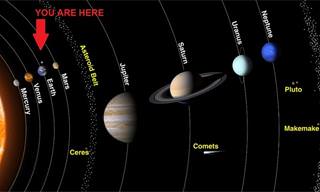
Travel From the Sun to Pluto With Our Interactive Guide!
The solar system is a fascinating place, and we wanted to bring you an interactive journey that you can use to travel through it. Enjoy the journey!

7 Weird Facts About the Human Voice That Will Surprise You
We bet you didn’t know these peculiar facts about the human voice.
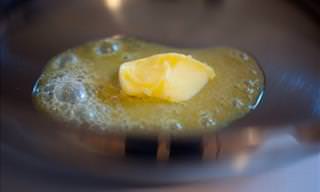
20 Useful Facts About the Science of Cooking
The science behind cooking is not often thought of, but it plays a crucial role in a dish turning out right. Here are 20 facts on the science of cooking.
 5:01
5:01
The Truth About Folding Phones You Need to Know
Don’t buy a foldable without knowing this first.

Could This Popular Ingredient Be a Cause of Cancer?
The chemical triclosan began to appear in a multitude of products in the early 1970s. This ingredient, found in a multitude of products has been linked to cancer.
To enable your Ad-Free Subscription, please fill the fields below
Your subscription was successful, now you can enjoy an ad-free experience!!
Note: To make sure you get no ads, please make sure to log in to your account. If you are logged in already, then refresh the page. The subscription can be cancelled at any time.


